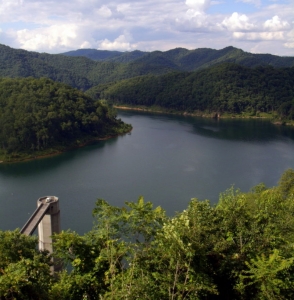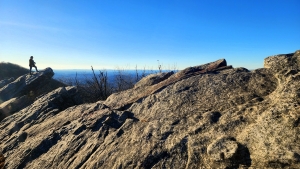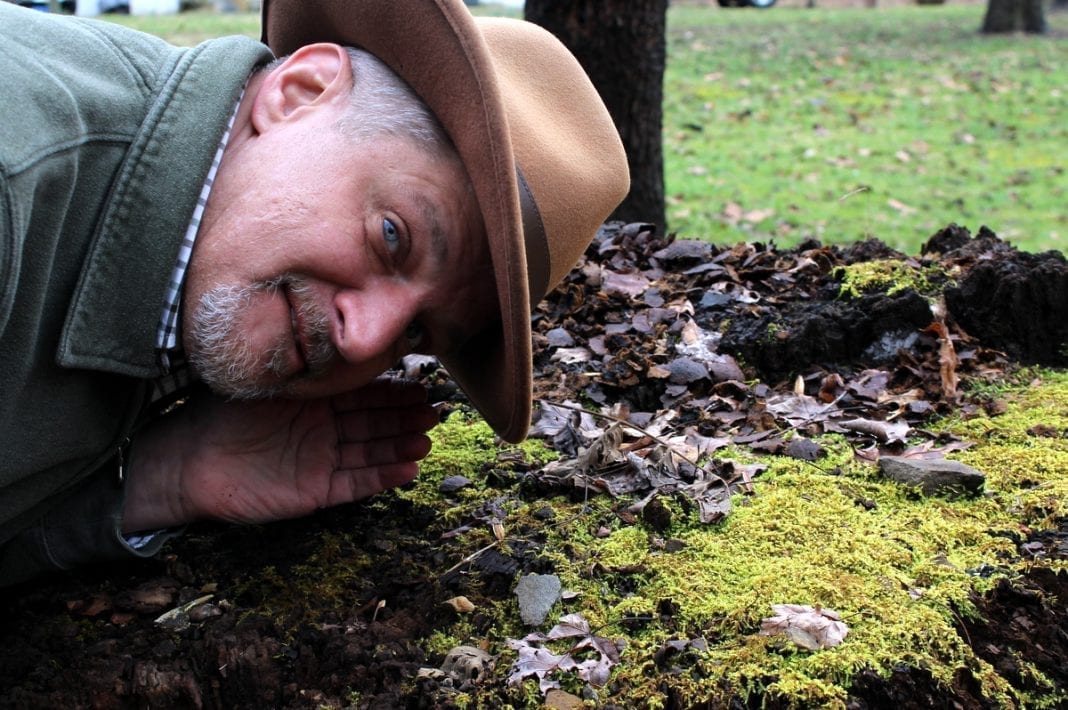GILBERT, W.Va. — As the tale goes, folks in the neighborhood of Codger Town in Wyoming County were haunted by a thundering rumble, the origins of which were attributed to a ghost they called "Old Thump."
Reuben Mitchell heard it himself as a boy in the '60s. "I'll never forget it! One night, I was walking along the river when I heard it coming—like horse hooves down the road, though nothing was there. It would send chills up your spine to hear it."

Mitchell, who is now curator of the Gilbert Museum at nearby Gilbert, West Virginia, says other witnesses described the thump as the sound of horses trotting along the road, others as a rhythmic thunder or a deep rumble at the threshold of sound.
In her blog "Haunted History of the Tri-State," paranormal investigator Teresa Racer relates that inhabitants of the West Virginia valley came to believe the sound was supernatural in origin:
"Residents quickly theorized that these ghostly sounds, which were dubbed 'Ol' Thump,' must have been the result of an early pioneer family that was killed by Indians or died while they tried to ford the river with their wagon. No one was sure what was causing the strange sounds, but witnesses kept coming forth with identical tales."
Construction of a dam on the Guyandotte River commenced in the late 1960s, and residents of Codger Town moved while R.D. Bailey Lake slowly filled the valley.
But the legend didn't drown beneath the rising waters. It transformed and grew to include the lake and the land itself. Some now attribute the rumble to an underground source.
According to Mitchell, historian Ralph Justice, in the 1948 book "The Ghost of the Guyan," made perhaps the first references to a supposed underground river that ran beneath the Guyandotte River, possibly giving rise to many tales that came after.
"If you can find that book," Mitchell said, "and I've only ever seen one copy, he wrote that there was a cavity beneath the river, and when something moves around down there, the rocks or whatever it might be, the sound comes to the surface, though I doubt you could hear it now, because of the lake."
Mitchell says natural gas that bubbles to the lake's surface may well have something to do with the cavity or some other geologic source.
"Years ago, I used to keep a boat that I'd run up and down R.D. Bailey Lake, and I'm telling you, that lake's got more gas in it than you can shake a stick at. You can sit there and watch bubbles coming up, which happens on other lakes, true, but R.D. Bailey Lake is full of bubbles."
Rumors of the underground river have resurfaced repeatedly through the years. "Only in Your State," a perennial source of quirky and often-dubious information, recycled the story as recently as 2016:
"It was discovered that the dam had redirected an ancient underground river that had flowed under Codger Town. The ghostly horse and carriage sounds were probably rocks and sticks being swept away underground."
According to geologist Mike Spore, who studied the area during the dam's development, no evidence supports the idea of a cavity or an underground river. Engineers would have discovered such a feature.
Peters Mountain roar continues to mystify West Virginia residents

ZENITH, W.Va. — Those who have heard the haunting "Peters Mountain Roar" say it will forever stay with them. "The roar of a thousand lions," some have called it. A meteorological phenomenon, the sound is most often experienced in the windward valleys west of Peters Mountain. Many theories have been proposed about its origin, though none have answered all questions about its magical influence. READ THE FULL STORY HERE.
Sign up for a FREE copy of West Virginia Explorer Magazine in your weekly email. Sign me up!


